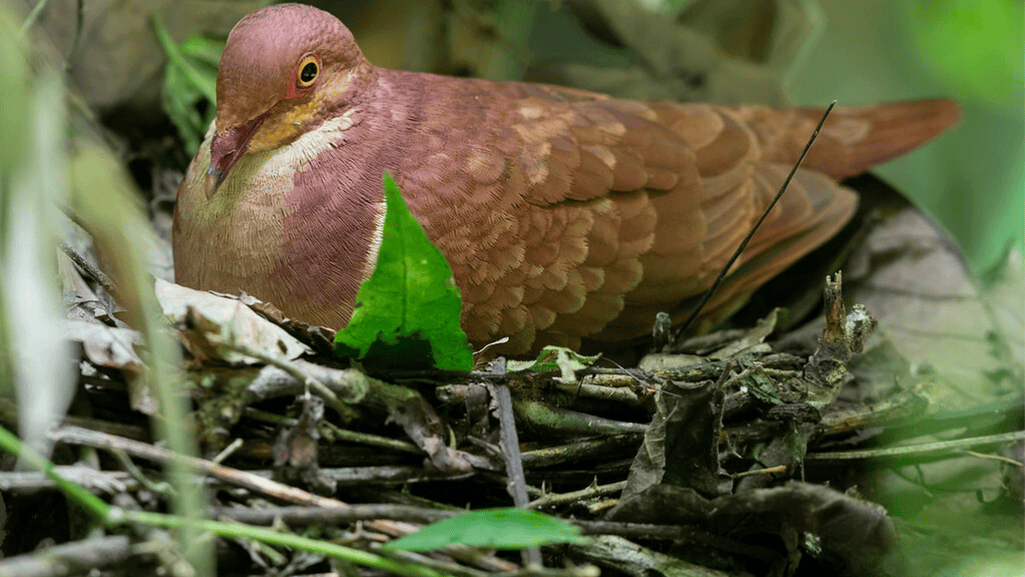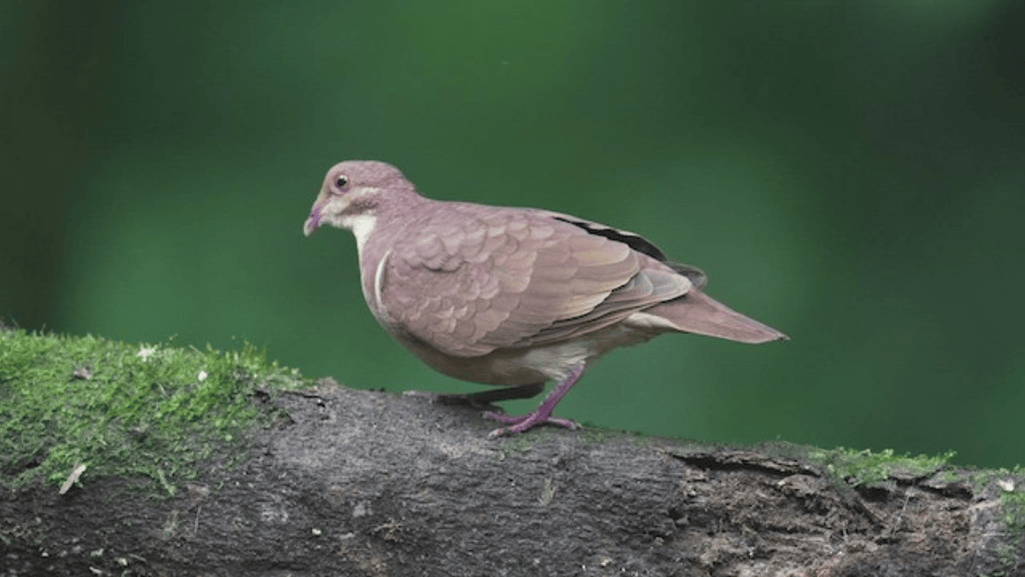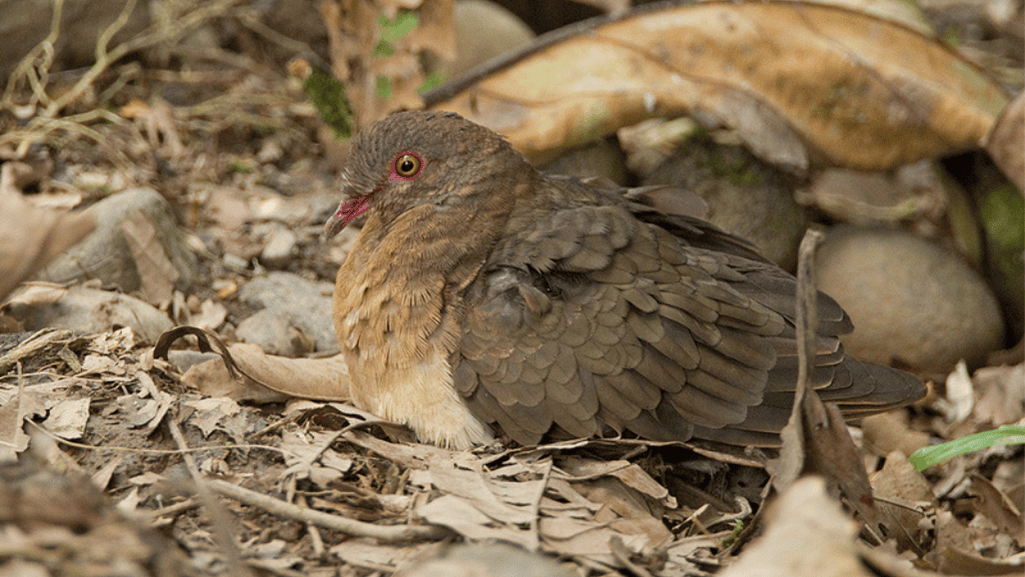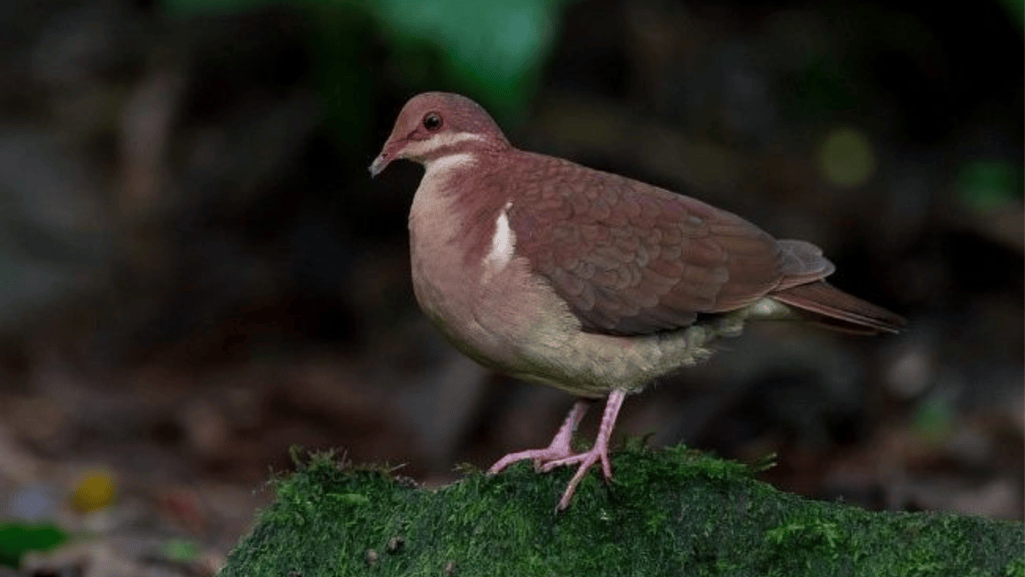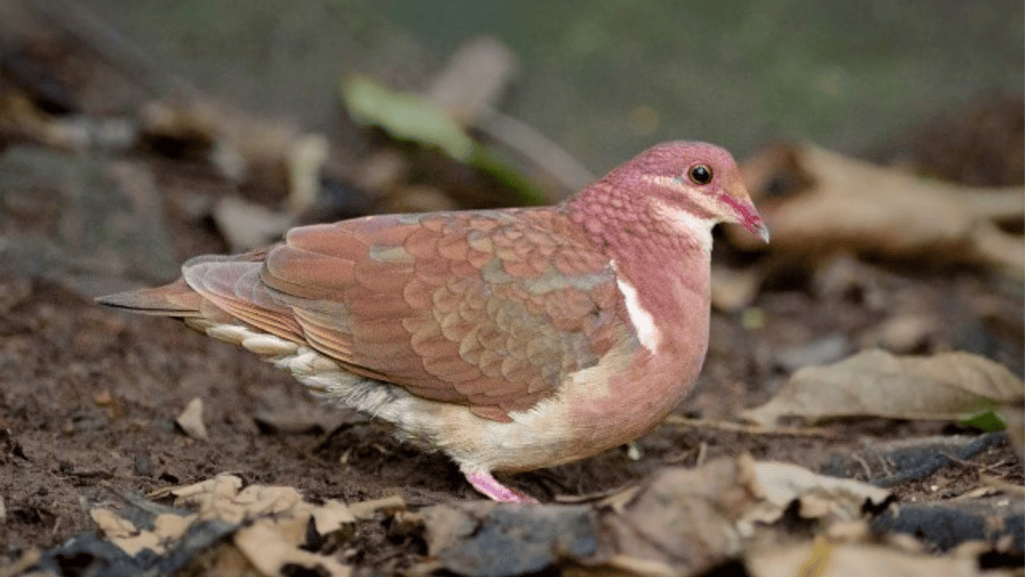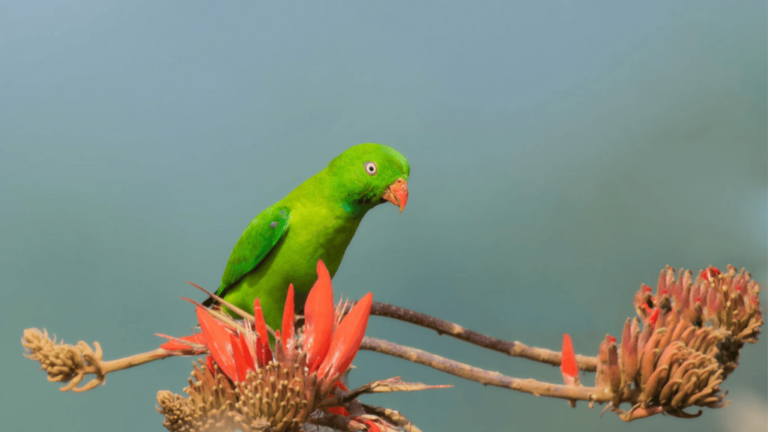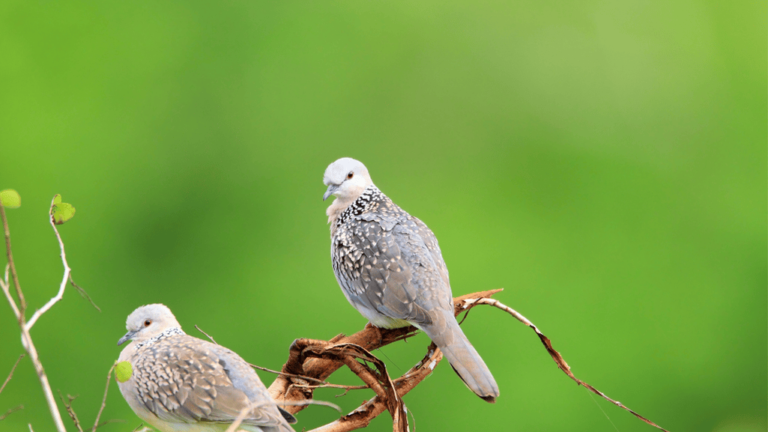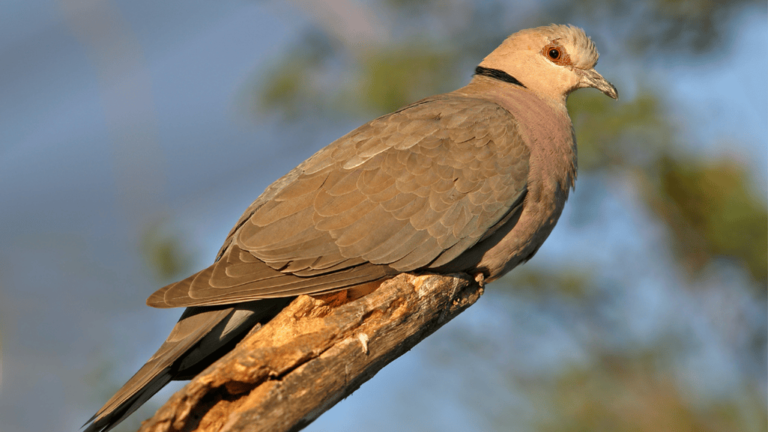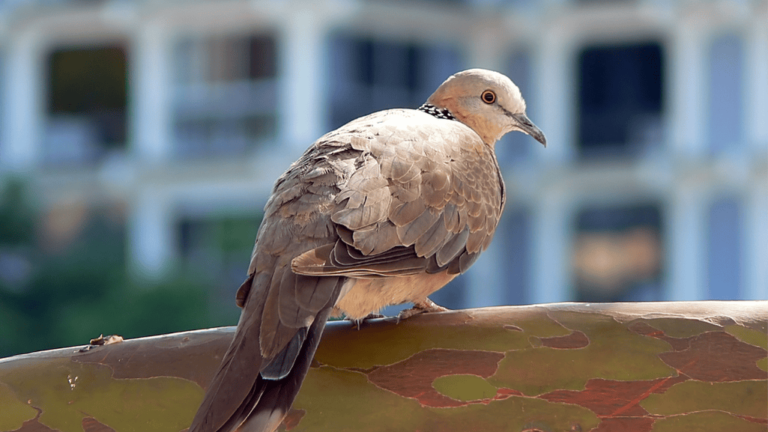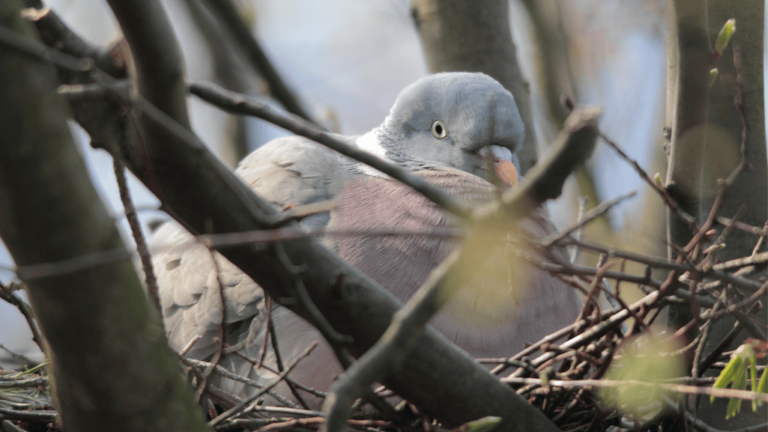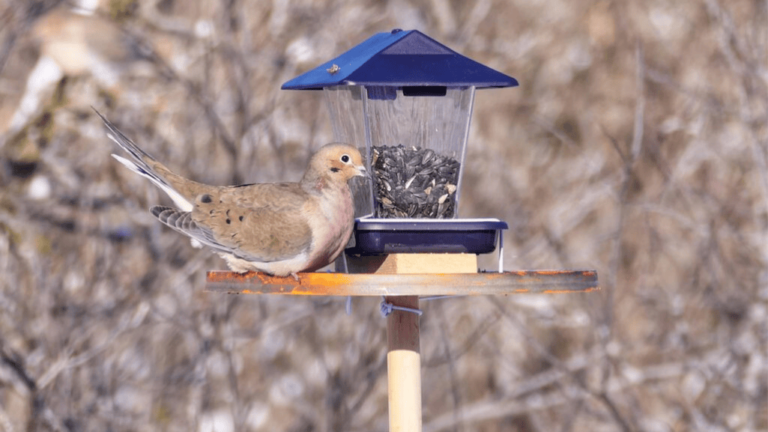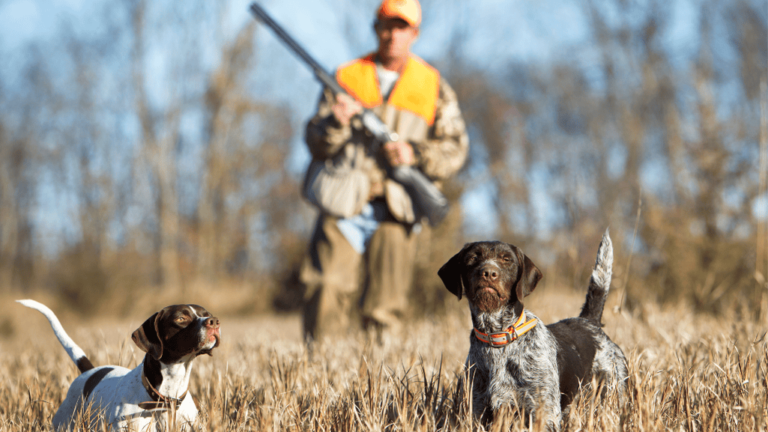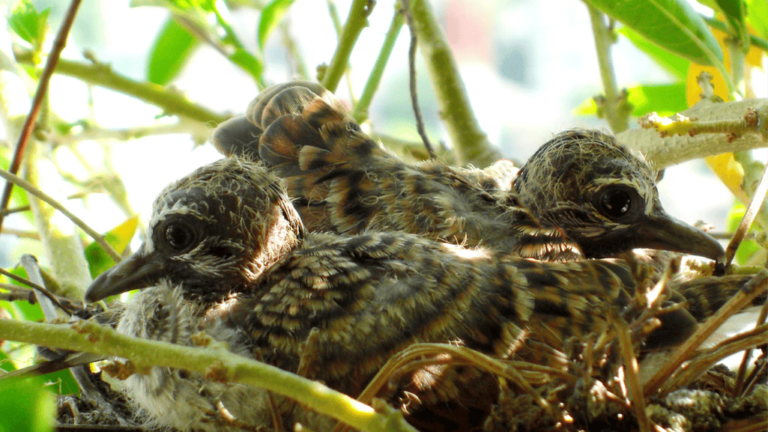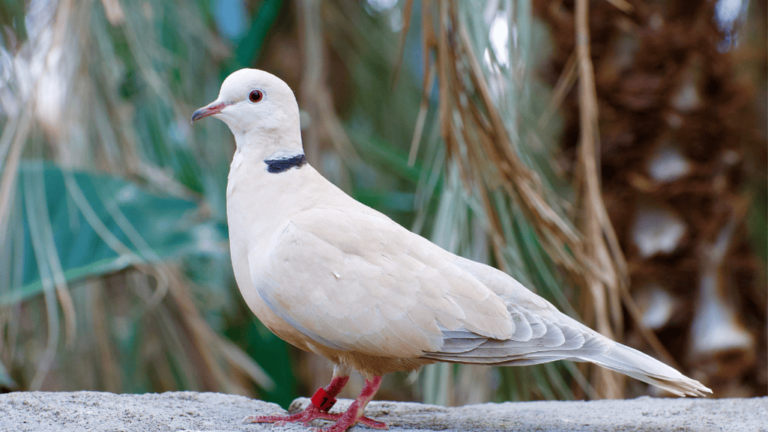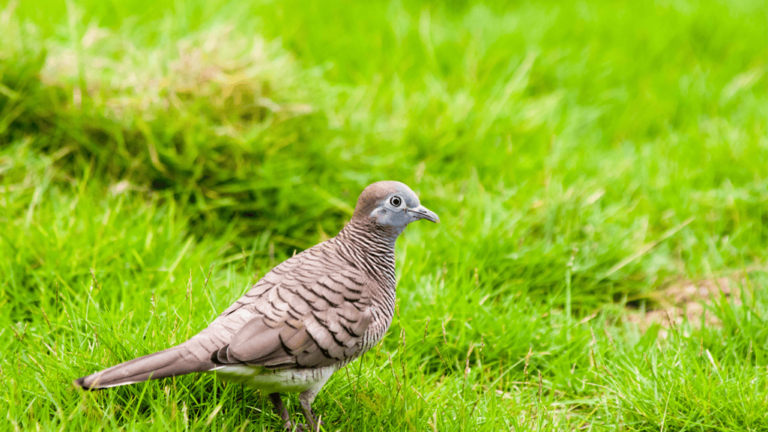Welcome to the world of the Ruddy Quail-Dove, a fascinating bird from the Caribbean. This bird, scientifically known as Geotrygon montana, has a beautiful rust color. It lives in many places, from Central America’s lowlands to the West Indies and South America’s tropics. It’s known for its beauty and plays a big part in keeping nature diverse.
These birds make simple nests in their homes, often in shrubs or on the ground. Seeing them is a reminder of the many birds that live on our planet.
Key Takeaways
- The Ruddy Quail-Dove is a bird with striking rust feathers, living in forests and coffee plantations.
- Even though it’s shy, this bird is common in the Caribbean, Central, and South America.
- It’s considered of Least Concern, but we need to keep protecting its habitat.
- Learning about what it eats helps us understand its role in nature.
- Knowing where it lives and moves helps us protect it better.
Discovering the Ruddy Quail-Dove
Exploring the world of birds often surprises us with unique species. The Ruddy Quail Dove is one such bird, known for its striking looks and soft calls. It lives in the Americas and Caribbean forests.
The Unique Beauty of the Ruddy Quail-Dove
The Ruddy Quail Dove has a rust-colored back and a matching facial mask. Its wings also have these warm tones, helping it blend into the forest. This bird, about 19 to 28 cm long, is a joy to see for bird lovers.
Physical Characteristics and Identification Tips
It’s easy to spot this dove by its lighter breast and rump colors and a stripe under the eye. These features are key for identifying it in its dense home.
Distribution Across the Americas and Caribbean
The Ruddy Quail Dove lives in many places, from South America’s lush forests to parts of the southern United States. It’s found in lowlands and up to 3,000 to 4,000 feet high. It’s adapted well to different environments.
For more info on the Ruddy Quail Dove, check out this in-depth study. It covers its habitat, behavior, and more.
Natural History of the Ruddy Quail-Dove
The Ruddy Quail Dove is a symbol of the rich life in tropical America. It’s a favorite among bird species lovers and wildlife conservation supporters. Early naturalists first described it, and it was officially named by Carl Linnaeus in “Systema Naturae.” The Ruddy Quail Dove, or Geotrygon montana, has been a focus for those studying New World doves.
This dove lives from Mexico’s dense forests to Bolivia’s green lands, up to 3000 feet high. Sometimes, it goes as high as 4000 feet. It loves the mountains and dense forests. In places like Costa Rica, Panama, and British Guiana, it shows how adaptable it is.
They eat berries, oily seeds, and small bugs from the ground. Watching them move and their unique bobbing makes them interesting. Their deep coo calls fill the air from March to June, adding to the sounds of their home.
| Attribute | Detail |
|---|---|
| Habitat Region | Mexico to Bolivia and Paraguay |
| Altitude Range | Up to 4000 feet |
| Conservation Status | Least Concern (IUCN 3.1) |
| Nesting Habits | Low height nests in primary forests |
| Diet | Berries, seeds, small invertebrates |
Even though the Ruddy Quail Dove is not in danger, we need to keep working to protect it. Helping this bird helps with wildlife conservation efforts. Studies on where they live and what they eat are key to saving them.
Understanding Ruddy Quail-Dove Behavior
For birdwatching and ecological research, knowing the Ruddy Quail-Dove‘s behavior is key. This bird is a favorite among birdwatchers. It shows unique patterns that are important for both experts and nature lovers to know.
The Ruddy Quail-Dove likes to eat on the ground. It mainly eats seeds but also eats small bugs for extra nutrition. Knowing this helps birdwatchers and aids in ecological studies. It also teaches nature enthusiasts about bird life cycles.
The dove’s home affects its behavior. For example, it likes areas with lots of leaf litter, up to 68%. This helps it find seeds and berries, which are key to its diet. Also, having limestone rocks that keep water helps the dove during dry times.
- Knowing about the land and plants is key to finding these birds while birdwatching.
- The dove’s actions and its home show why saving its habitat is important.
Understanding the Ruddy Quail-Dove’s behavior makes birdwatching better and helps conservation. Teaching more people about birds like the Ruddy Quail-Dove can lead to more support for saving these birds. This way, they can live on for many years.
The Significance of Conservation Status
The Ruddy Quail Dove is listed as a species of least concern by the IUCN. But, this doesn’t mean it’s safe from threats. We need to keep a close watch and take action to protect it. This is why understanding its conservation status is key.
It helps us gather resources and spread the word to help species like the Ruddy Quail Dove. This is crucial for their survival.
Ruddy Quail-Dove in the IUCN Red List
The Ruddy Quail Dove lives from Mexico to Brazil and across the West Indies. But, it faces threats from deforestation. It’s expected to lose 16.5–18.7% of its home in the next three generations because of deforestation in the Amazon.
This shows why its status on the IUCN Red List is important.
Efforts to Protect the Ruddy Quail-Dove
In Puerto Rico, 455 km² of its habitat is protected. This area is in Maricao and Carite State Forests, Sierra de Luquillo, and Mona. It’s a big part of where these doves breed.
But, we need to do more to protect all their breeding areas. We must fight against environmental damage.
Participating in Wildlife Conservation Initiatives
People can play a big role in saving the Ruddy Quail Dove. By joining citizen science projects and supporting conservation groups, we can help. This creates a strong support system for the species.
Together, we can protect the Ruddy Quail Dove and keep its home safe. This helps us all in the fight for Wildlife Conservation.
Ruddy Quail-Dove Habitats Explored
The Ruddy Quail-Dove, a notable Caribbean bird, thrives in various habitats. These habitats are key to its survival and behavior. Knowing where this bird lives helps us understand its needs and challenges in the wild.
Woodland and Scrub Forests as Natural Habitats
Woodlands and scrub forests are the main homes for the Ruddy Quail-Dove. They offer food, nesting sites, and protection from predators. This makes them perfect for breeding and finding food.
The dense foliage in these areas helps the birds stay safe. Keeping these habitats healthy is crucial for the Ruddy Quail-Dove population.
Adaptation to Coffee Plantations and Human Environments
The Ruddy Quail-Dove has adapted well to human-made landscapes, like coffee plantations. It uses the forest-like areas within these plantations as new homes. This shows how resilient the bird is, but also highlights the need for careful farming practices.
For more on how other birds adapt to human environments, check out this informative article. It talks about the conservation of another Caribbean bird.
Impact of Forest Fragmentation on the Species
Even though the Ruddy Quail-Dove can adapt, forest fragmentation affects it too. This issue breaks up habitats, making it harder for birds to breed and maintain genetic diversity. To help this species, we need to protect large forests and use farming methods that are good for nature.
Ruddy Quail-Dove Diet and Foraging Patterns
The Ruddy Quail-Dove’s diet is a mix of seeds and small invertebrates. This mix is key to their survival. Bird lovers and photographers often see these birds while they forage. This gives us a peek into their role in nature and how they behave.
Seeds: A Staple in the Ruddy Quail-Dove’s Diet
Seeds are the main food for Ruddy Quail-Doves. They find seeds on the forest floor, picking them from the leaf litter. The type of seeds they eat changes with the season and location.
Incorporation of Small Invertebrates for Nutrition
Ruddy Quail-Doves also eat small invertebrates. This adds protein to their diet, important for health and breeding. Eating insects is key during breeding season when they need more energy and protein.
Foraging Techniques of the Ruddy Quail-Dove
Ruddy Quail-Doves forage slowly and carefully. They search through leaves and small branches for seeds and insects. This careful search is how they survive in the dense forest undergrowth.
Learning about their diet and foraging helps with conservation efforts. It also gives bird watchers and photographers a deeper understanding of these birds. This knowledge makes their photos more meaningful, showing the beauty of these birds in the wild.
Breeding and Nesting Behaviors of Ruddy Quail-Dove
The Ruddy Quail-Dove is a favorite among birdwatching fans and wildlife photography buffs. It has unique breeding habits that are key to its survival. These habits offer deep insights into its life, especially during breeding season from April to August.
In this season, the female Ruddy Quail-Dove builds a bowl-shaped nest with twigs and leaves. She places it in the undergrowth of primary forests or tall woodlands, usually 1 to 8 feet off the ground. This low spot helps hide the nest from predators and harsh weather.
Each breeding attempt usually results in two buff-colored eggs. These eggs vary in shade from pale buff to dark cream. Interestingly, ten eggs measured in Costa Rica were about 27.6 by 20.2 millimeters in size, showing the species’ slight size variations.
- Consistency in egg-laying helps spread the species across areas like the Greater Antilles and tropical America.
- Egg-laying times vary, from late afternoon to early morning, based on daylight and weather.
Both parents take turns incubating the eggs for about 11 days before they hatch. They keep caring for the chicks until they leave the nest, which helps many chicks survive. If conditions are good, they may start a new cycle, leading to multiple breeding cycles in one season.
Learning about these behaviors deepens the knowledge of birdwatching enthusiasts and wildlife photography artists. It helps in capturing the life of the Ruddy Quail-Dove. Each observation and photo tells a part of the story, showing why these birds are important and how they enrich our world.
Taxonomy and Classification of Ruddy Quail-Dove
The Ruddy Quail Dove is a bird that stands out in the world of birds. Its taxonomy and classification show how it fits into a big family within bird biology. This bird is part of Eukaryota and Animalia, showing its main biological group.
This bird is classified under Chordata and Aves, making it a key member of the Columbiformes order. It belongs to the Columbidae family, known for its diversity and importance in ecosystems. The bird’s taxonomy helps us understand its evolution, showing how it changed over time.
The Evolutionary Lineage of the Species
The story of the Ruddy Quail Dove’s evolution takes us back in time. Studies show that its ancestors split from other birds about 65.8 million years ago. This event was a big step in the bird world’s history. Knowing about the Ruddy Quail Dove’s past helps us protect it better.
Subspecies Recognition and Distribution
The Columbidae family includes two subspecies of the Ruddy Quail Dove: G. m. martinica in the Lesser Antilles, and G. m. montana from Mexico to northeast Argentina. Knowing about these subspecies helps experts protect their unique traits and habitats.
| Subspecies Name | Geographical Distribution |
|---|---|
| G. m. martinica | Lesser Antilles |
| G. m. montana | Mexico to Northeast Argentina, Greater Antilles, Trinidad |
By understanding the Ruddy Quail Dove’s taxonomy and conservation efforts, we can better protect it. This bird’s story shows the importance of careful study and action.
Ecosystem Role and Importance of the Ruddy Quail-Dove
The Ruddy Quail-Dove is key to the Americas’ bird diversity. It plays a big role in keeping ecosystems healthy. Its actions are vital but often overlooked. By understanding what this bird does, we see why protecting it and its home is so important.
Seed Dispersal and Biodiversity Enhancement
This bird helps spread seeds, which is key for forests to grow back. When it eats fruits and then poops out the seeds, it helps new plants start. This is good for the health of the ecosystem and its variety of life.
Studies like Aide et al. (2000) show how important this is for forests in tropical areas. It helps with efforts to restore these forests.
Indicator Species for Forest Health
The Ruddy Quail-Dove tells us how healthy its home is. If there are many of them, the forest is likely doing well. But if their numbers drop, it could mean trouble for the environment.
This makes saving the Ruddy Quail-Dove crucial for keeping forests healthy. Bruner et al. (2001) found that protected areas are key to saving these diverse ecosystems.
Working to save the Ruddy Quail-Dove helps with bigger goals of protecting wildlife. Seeing how important this bird is to its ecosystem can lead to better ways to save nature. This helps keep our planet’s variety of life safe for the future.
Ruddy Quail-Dove and the World of Birdwatching
The Ruddy Quail-Dove has always drawn in birdwatching lovers and wildlife photography pros. It’s a favorite among nature enthusiasts who enjoy its hidden nature and beautiful looks.
This dove lives in many places, from lowland forests to hills. Its wide range makes it exciting for those who love to watch and photograph it. Experts have gathered lots of info on this dove, showing its beauty through sound and sight.
| Record Type | Total Recordings | Duration | Location Range | Elevation Range (meters) |
|---|---|---|---|---|
| Foreground | 139 | 1 hr 28 mins 7 secs | Suriname, Brazil, Mexico, et al. | 10-1300 |
| Background | 309 | N/A | Various | N/A |
For more info on the Ruddy Quail-Dove and tips on watching these birds, this guide on the Senegal Combassou is very helpful. It gives insights on similar birds, adding to birdwatchers’ knowledge.
Recordings from 1997 to 2024 show how long people have been interested in this dove. Whether in Brazil or Suriname, the Ruddy Quail-Dove offers sights and sounds for nature enthusiasts.
Experts like Peter Boesman and Klaus Rudloff have greatly helped us understand the Ruddy Quail-Dove. Their work has made a big impact on bird studies and conservation. It has also added to the wildlife photography world, capturing nature’s beauty.
Conclusion
The Ruddy Quail-Dove is a symbol of nature’s beauty and importance. It shows how birds and ecosystems work together. This bird is crucial for spreading seeds and keeping its home healthy. Even though it’s not endangered, we must keep watching and protecting it.
Birdwatching is more than just seeing a Ruddy Quail-Dove. It’s about understanding its role in nature. In places like the Greater Antilles and Central and South America, people have been watching and learning from this bird. Its quiet calls in the forest show how important quiet places are for nature.
Learning about the Ruddy Quail-Dove’s habits and where it lives helps us appreciate it more. This bird’s story makes us think about our role in protecting nature. It reminds us to keep working on saving wildlife and protecting nature for the future.


